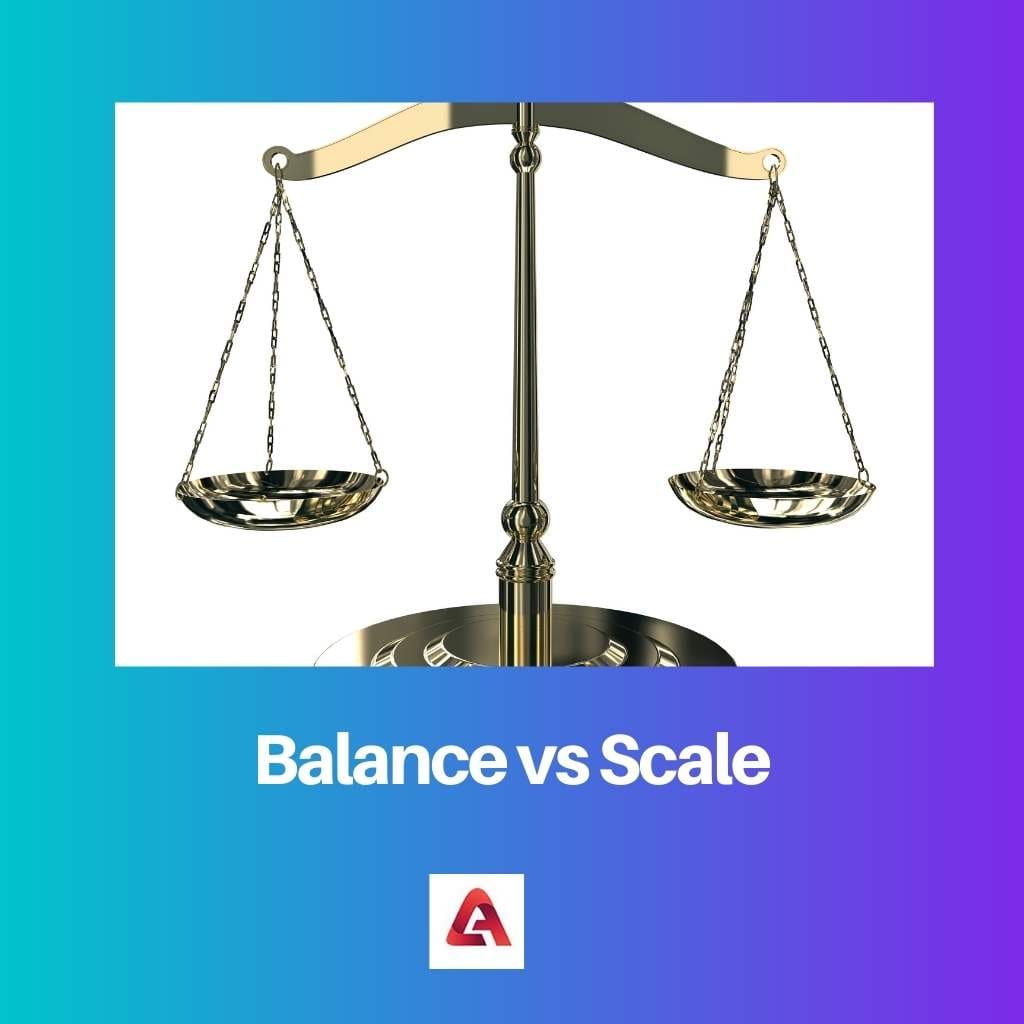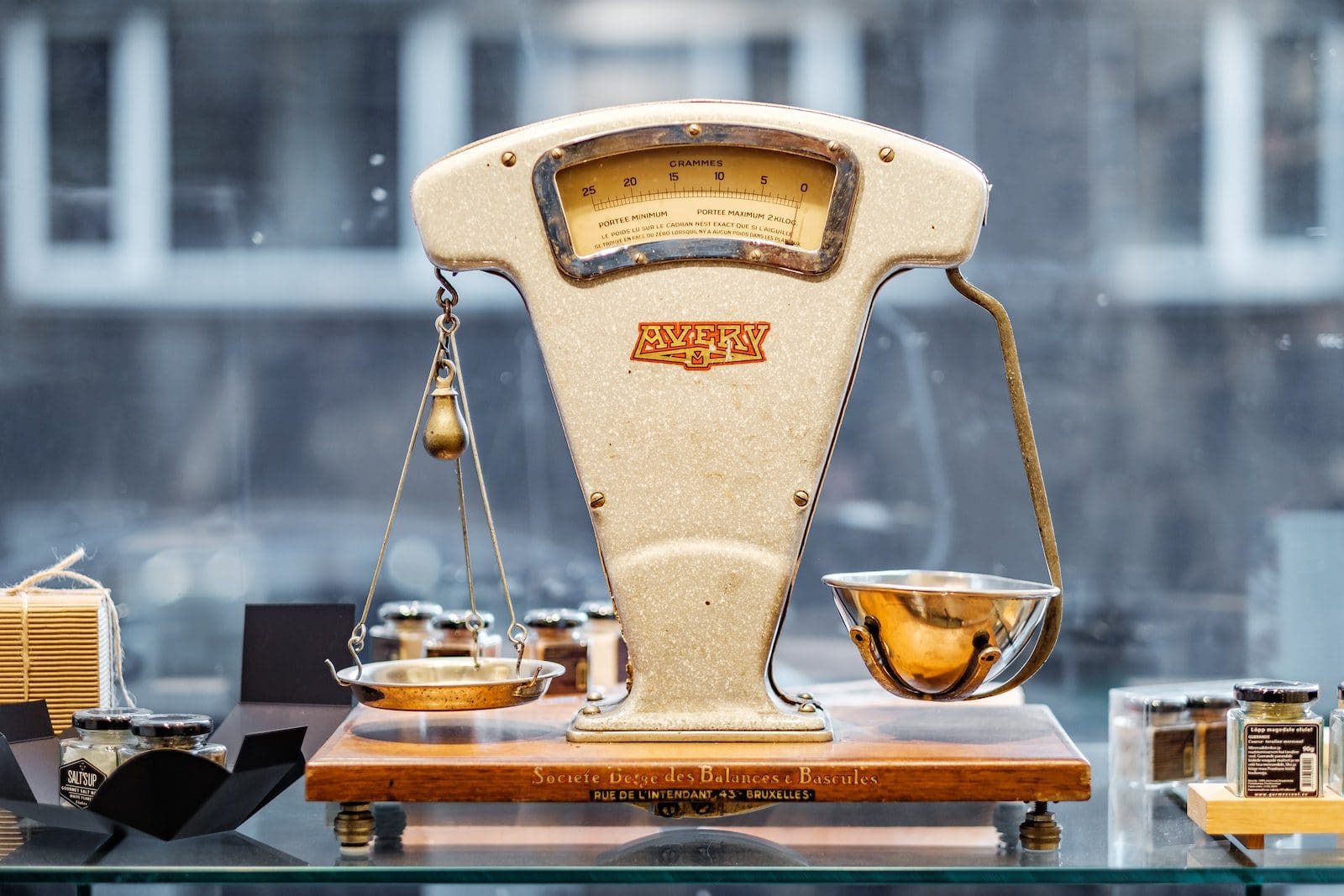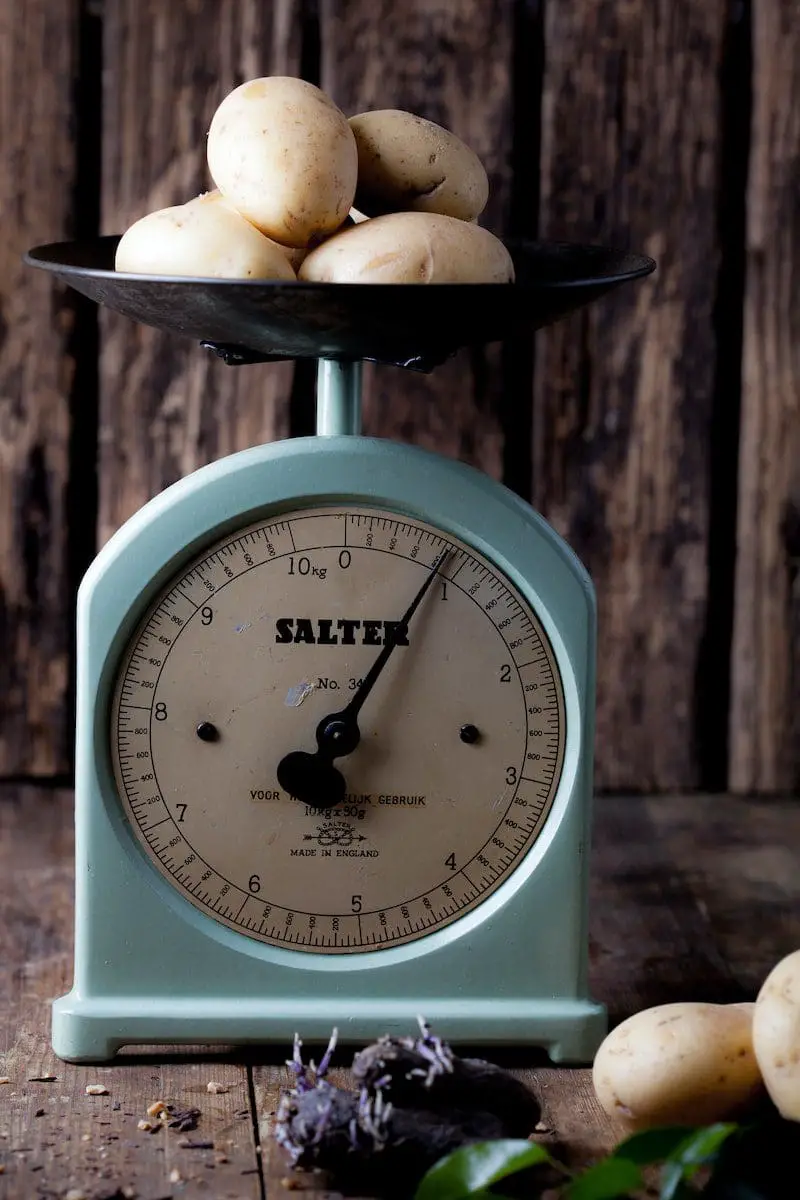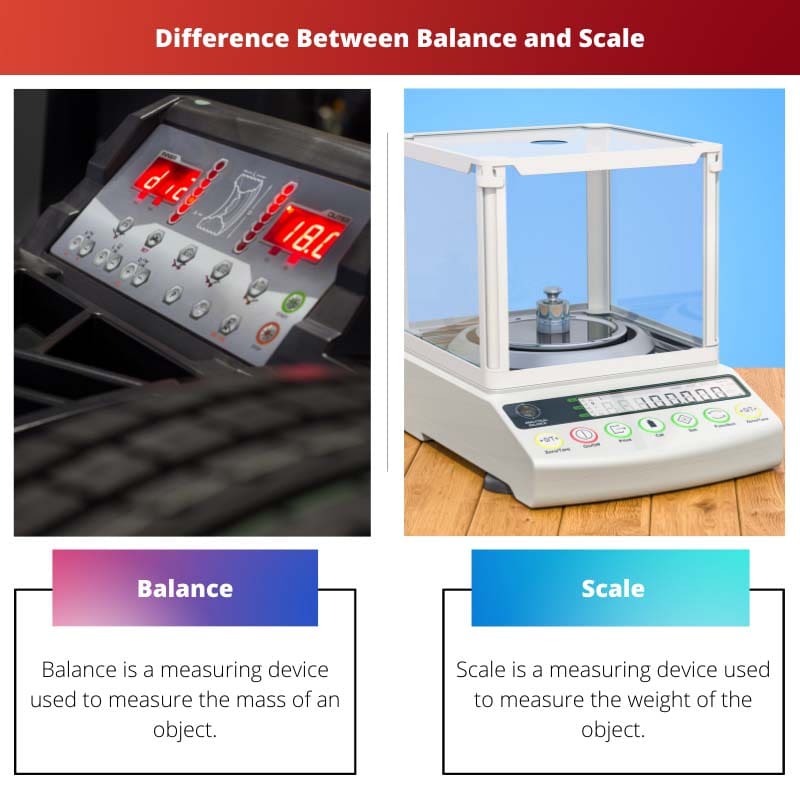Balance and Scale are both weighing equipment or devices and mostly is used to weigh similar objects. Though both are used for similar tasks, it is common to get confused in both terms.
Key Takeaways
- Balances measure mass by comparing an unknown mass to a known mass, while scales measure weight based on the force exerted by an object.
- Balances are unaffected by gravity changes, whereas scales give different readings in different gravitational environments.
- Analytical balances offer higher precision and accuracy than scales.
Balance vs Scale
The difference between balance and scale is that a balance measures the mass of the object or thing, while on the other hand, a scale measures the weight of an object. The mass of an object is the matter which the object has, while weight is the force of gravity on an object.

Balance is used to measure the mass of an object. It is measured in Kilograms. Mass is obtained by balancing the unknown mass of an object with an object of known mass.
A scale is used to measure the weight of an object. The weight is measured through the use of the tension or compression force of constraint that the object provides.
Comparison Table
| Parameters of Comparison | Balance | Scale |
|---|---|---|
| Definition | Balance is a measuring device used to measure the mass of an object. | Scale is a measuring device used to measure the weight of the object. |
| Measured In | Balance measures mass which is measured in Kilograms. | Scale measure weight which is measured in Newtons. |
| Precision | A balance is more précised as compared to scale. | A scale has less precision as compared to balance. |
| Effect of Gravity | The measurements by a balance do not depend on the gravitation pull of the earth. | The measurements by a scale depending on the gravitational pull of the earth. |
| Types | Precision balance and analytical balance are common types of balances. | Mechanical scales and Digital scales are the common types of scales. |
What is Balance?
A balance is a measuring device that measures the mass of an object. The mass is determined by balancing the known mass of an object with the unknown mass.
Earlier, the balances were used to measure the mass by taking a balanced, putting an object whose mass is known on one side of the balance and the other object whose mass is unknown on the other side, and then comparing the two.
The common types of balance are analytical balance, Equal Arm Balance, Spring Balance, Top Loading Balance, Torsion Balance, Triple-Beam Balance, etc.
Indeed, gravity does not affect the mass of an object. A balance will give the same reading for the mass no matter where the object is taken because gravity will act on both sides of the balance equally.

What is Scale?
A scale is weighing equipment that is used to measure the weight of an object. The weight of an object is the force acting on the object due to the gravitational pull of the earth.
Since the scale measures the weight, the weight of the object is affected by the force of gravity of the Earth. And therefore, it depends on where the weight has been measured.
The perfect scale stays neutral first. The features of a scale are tare, net indications, gross, printing, display, units-of-measure conversion, etc.
The common types of scales are spring scales, pneumatic scales, Domestic weighing scales, Digital bathroom scales, platform scales, etc.

Main Differences Between Balance And Scale
- A balance is said to be more precise than a scale.
- A balance is used less in day-to-day life. A scale is used more widely these days.


The measurements by a balance are unaffected by gravity changes.
That’s right, balances give consistent readings no matter the location.
The perfect scale stays neutral first.
Absolutely, tare, net indications, gross, and other features make scales versatile tools for various applications.
A balance gives the same reading for mass no matter where the object is taken.
Indeed, the mass of an object is not affected by changes in gravity, and a balance system ensures consistent measurements.
Balances, particularly analytical balances, offer extremely high precision and accuracy in scientific applications.
A balance measures the mass of an object.
Yes, and mass can be measured in kilograms using a balance.
Balances are used in laboratories and other scientific settings for precise measurements of mass.
A balance is more precise than a scale.
Agreed, a balance measures mass and is used in scientific environments.
Yes, and mass of an object is a measure of the amount of matter the object has, not the force of gravity on it.
The weight of an object is the force acting on the object due to the gravitational pull of the earth.
Correct, and scales are designed to measure this force of gravitational attraction on objects.
No comment
A scale is used more widely these days.
Exactly, scales have applications in industry, laboratories, and at home.
Yes, scales are used in everyday life. They measure the force of gravity and are widely used for commerce and household purposes.
A scale measures the weight of an object.
Indeed, weight is the force exerted by the object due to gravity.
Scales give different readings in different gravitational environments, as opposed to balances.
Balances measure mass by comparing an unknown mass to a known mass.
Precisely, balances are based on the principle of mass comparison.